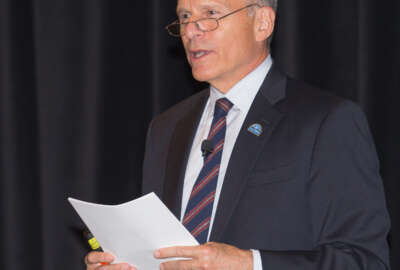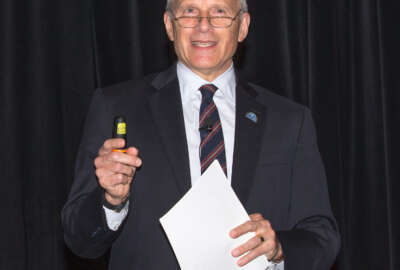

Tom Allin, the Veterans Affairs Department’s chief veterans experience officer, developed an approach that lets employees take a different perspective when...
The Veterans Affairs Department’s ongoing goal to provide world class customer service always begins with a simple premise: understand the veterans experience first and foremost.
To that end, VA is giving hospitals, clinics and other parts of the agency a new framework to map out its customer service experience to figure out where the gaps exist and close them.
“Our goal is to make it a trusted life-long relationship. When we are working with our veterans it has to be viewed as a relational and not a transactional experience with our veterans,” said Tom Allin, VA’s chief veterans experience officer, at the ACT-IAC Customer Service Summit in Washington Oct. 7. “It’s the purpose that guides the behavior and has them doing the right thing rather than just doing things right. For the veterans experience team, our function is to create a seamless end-to-end journey across administrations, across offices, but the purpose is to create trusted life-long relationships.”
Allin said the framework will give VA employees a different perspective or lens for how they view their role in working with veterans.
“If you are talking to 340,000 employees how do you have a common understanding of the goal and what it is we are trying to achieve? It’s been very difficult for me in terms of experience and how you describe the experience,” he said.
He said Secretary Bob McDonald and other senior executives have reviewed this new approach and liked what they saw. Allin said several VA organizations are just beginning to use the framework to improve the experience of the veterans they serve.
The framework breaks the customer experience in three stages—borrowed from the theater industry.
“Part of what we are doing now is working our way through those nearly 5,000 suggestions that have come in to the IdeaHouse. Many of them, in fact, have been approved. There are things that are, in some instances, of a more relatively local nature where we have the ability to move very quickly to make those changes,” he said. “Others you have to look at from more of a systemic standpoint because you change something over here, you are likely to have an impact someplace else. You want to make sure you don’t have unintended consequences. For us it’s very important to come back to our employees. We feel accountable to those employees that make those suggestions to say, ‘we heard you and here are the actions that we are taking to pursue those.’”
Gibson said VA is launching two other customer service focused initiatives.
One is to capture timely feedback through a system called VetLINK where veterans can offer insights and comments through a kiosk at hospitals or centers.
The second is the interactive customer evaluation (ICE), which also focuses on capturing feedback, but this one empowers the frontline staff by giving them timely contemporaneous information.
“It’s about improving the veteran experience. We sit and look at a lot of different work we have to do. We are an organization that is fraught with opportunities to do things better,” he said. “It is a question of prioritization and it’s about putting the veteran at the center of that analysis so that you can see where you can have the greatest impact on the quality of the veteran experience.”
Copyright © 2024 Federal News Network. All rights reserved. This website is not intended for users located within the European Economic Area.
Jason Miller is executive editor of Federal News Network and directs news coverage on the people, policy and programs of the federal government.
Follow @jmillerWFED


